Flying the Strikemaster Mk88 in RNZAF Service: Part 1 the 1970s
In late 1972, after phasing out from service the De Havilland Vampire, the Royal New Zealand Air Force (RNZAF) began to introduce to service the first ten of what eventually became a squadron of sixteen British Aircraft Corporation (BAC) Strikemaster Mk88 dual-seat training aircraft. The Strikemaster was widely known as the ‘Blunty’, having evolved from the rugged Royal Air Force (RAF) Jet Provost trainer. The Blunty was used in the RNZAF for the Advanced stage of pilot training taking the trainee on from the Basic and Intermediate stages already completed on the Harvard (later, from mid-1977, the CT4B Airtrainer) to ‘wings’ standard on the Strikemaster. And with the added provision to fit a 7.62mm machine gun, as well as under wing pylon hard points to facilitate the carriage of drop tanks for extra fuel, or ‘parent’ racks to carry practice bombs or rocket pods, the Blunty was also a rugged and useful Fighter Lead-In Trainer (FLIT) for those pilots selected to progress to the RNZAF’s A4K Skyhawk.
At the time the Blunty was introduced to RNZAF service, I was flying the Skyhawk A4K with 75 Squadron at Ohakea. Then, after serving a little over 2 years in Singapore from late 1973 until the end of 1975, I completed a Flying Instructor’s Course (FIC) at RNZAF Base Wigram in early 1976 and became, in June 1976, a Qualified Flying Instructor (QFI) on the North American Harvard aircraft at Pilot Training Squadron (PTS), Wigram.
My First Flight in a Strikemaster – At PTS, student pilots were taken to a tented camp of some 10 days duration at a regional airfield in New Zealand where their pilot navigation skills were advanced. On 17th November 1976, PTS deployed from Wigram to Invercargill airfield where a tented camp was set up for the duration. It was at this camp that I had my first ride in a Strikemaster:- aircraft captain, Flying Officer (Fg Off) Peter Cross in Strikemaster NZ6363 took me on a 2.5 hour navigation exercise (navex) from Invercargill to Manapouri where he did a touch and go (T & G) landing, before flying on to Queenstown for a T & G, to Cromwell for a T & G, to Alexandra for a T & G and then via Gore back to Invercargill. I remember nothing about the flight except to say I was impressed by the range of the Strikemaster, fitted with underwing drop tanks carrying extra fuel.
A Short Strikemaster Conversion and an A2 Upgrade – My next series of flights in a Strikemaster were at Ohakea in 1978. In January 1978 I was promoted to Squadron Leader and posted to Central Flying School (CFS) at Wigram. One of the main roles of CFS was to train qualified RNZAF pilots to be QFIs; another role was to test QFIs for suitability to upgrade their status as an instructor, and this was the prime reason for my visit to Ohakea wherein I was to test Flight Lieutenant (Flt Lt) Al King for upgrade from B1 to A2 QFI status. As I had not previously completed a conversion course (convex) onto the Strikemaster, I was fortunate to be able to do at least some of the standard Strikemaster convex before undertaking Al King’s A2 upgrade.
After positioning by DH Devon NZ1804 from Wigram to Ohakea on 20th June 1978, I had my first Strikemaster convex sortie that day with Flt Lt Al King as QFI in Strikemaster NZ6374. After being ‘kitted out’ and ‘suited-up’ in a G Suit, helmet and oxygen mask, and a ‘Mae West’ flotation device and survival vest, my RNZAF Pilots Logbook records ‘Conversion (Conv) 1- Effect of Controls, Handling, Aeros, Circuits’ for 1.1 hours of Dual Instruction. The next day, 21 Jun 78, I completed Conv 2 in NZ6374, this time for 1.2 hours dual instruction with Al King – the sortie content included ‘Heavy weight circuits, upper air work including aeros, stalling and steep turns, a practice forced landing with a simulated engine failure back to Ohakea, and T & G circuits’. I missed out on going solo on Conv 3 that day because I was taking antibiotics, so my next flight was Conv 4 on 22 Jun 78 with Al King in NZ6370 for 1.3 hours dual instruction – the sortie included heavy weight circuits, turn-back after simulated engine failure on takeoff, high level aeros, a high TACAN approach to Ohakea, and circuits at nearby Palmerston North. My second flight on 22 Jun 78 was for 1.2 hours with Al King in NZ6372 for Conv 5 – the first of several Instrument flying flights. The content of the sortie was a Standard Instrument Departure (SID), steep turns, a hi TACAN approach to Ohakea, a low level NDB approach to Wanganui, and a Surveillance Radar Approach (SRA) to Ohakea.
I had two flights on 23 Jun 78, the first with Al King on Conv 6 doing more instrument flying, this time in NZ6373 for 1.2 hours. The sortie content was a SID climbing to about Flight Level 200 for upper air work including steep turns, recovery from unusual attitudes, a hi TACAN letdown and approach to Ohakea, a low level NDB to Palmerston North before recovery to Ohakea. My second flight that day was Conv 7 with Fg Off Peter Hay as QFI in NZ 6374 for 1.2 hours, and this saw the introduction of some Limited Panel instrument flying simulating the main attitude indicator had failed such that reliance on alterative instruments became necessary to fly the jet; after a SID and climb to altitude, some limited panel work was flown before a hi NDB approach to Wanganui, a SRA to Ohakea, and a hi TACAN to Ohakea.
First Solo in a Strikemaster – My first solo flight in a Strikemaster was on 26 Jun 78 for 1.2 hours in NZ6371 – this was Conv 3 that I had missed out on earlier. I completed circuits, a turn-back, upper air work including aeros, stalling, steep and maximum rate turns before a low level NDB approach to Ohakea and more circuits. I thought the Strikemaster was a ‘predictable’ aircraft to fly, if a little slow in rate of roll, especially early in a sortie when there was still fuel in the wing tip tanks. Throttle response was good from the Rolls Royce Viper turbojet engine. Visibility from the roomy cockpit was good.
Instrument Rating Test – A second flight on 26 Jun 78 saw me doing an Instrument Rating Test (IRT) in NZ6374 for 1.2 hours with the 14 Squadron Instrument Rating Examiner (IRE), Flt Lt Peter Moore RAF. The sortie involved full and limited panel flying including a SID, recovery from unusual attitudes, and NDB, TACAN and SRA approaches – I passed the test!
My first flight of three on 27 Jun 78 saw me fly with QFI Fg Off Peter Hay again, this time on Conv 8 in NZ6368 for 1.3 hours doing general handling and some low flying not below 50 feet above ground level (AGL). My second flight was as a passenger in NZ6374 for 1 hour with Fg Off Phil Symmans of 14 Squadron Operational Flight doing four-aircraft tactical formations including low-battle formation. And my third flight that day was with Fg Off Peter Hay as QFI in NZ6376 for 1.3 hours doing close formation flying on another Strikemaster jet– the sortie included a pairs close formation takeoff, close formation in echelon left, right and line astern, a tailchase at some 100 metres distant, a pairs TACAN letdown, and a pairs SRA with a pairs landing. A busy day.
A QFI A2 Upgrade Test – June 28th brought the A2 upgrade flight on Al King. The flight was preceded by several days of classroom question sessions to probe Al’s aviation knowledge including the principles of flight as per the then extant ‘bible’ – RAF Air Publication 129 (AP 129), plus other relevant sources. Al had also delivered a classroom briefing on a nominated subject using a whiteboard and other training aids. In truth, given his excellent depth of knowledge and superior classroom technique, plus the fact he had already given me five ‘convex’ flights wherein I was able to assess at first hand his flying and instructional ability, the A2 upgrade sortie was really just a formality; nonetheless in NZ6371, we flew for 1.3 hours on the required ‘check-ride’ before I had much pleasure in confirming he had passed the upgrade and was now an A2 QFI. Well done Al!
A second flight for me on 28 Jun 78 saw me flying NZ6364 solo as number 2 in a two-aircraft close formation sortie wherein the mission content included a pairs takeoff (the aircraft was fitted with wing drop tanks – my first flight with these fitted), close formation, a tailchase, formation aeros and a ‘buzz and break’ at Ohakea for a stream landing: – a very satisfying 1.3 hour sortie! On 29 Jun 78 I had a ‘passenger’ flight with my first student on Harvards back in mid-1976, Fg Off John Dick. In NZ6376 John flew a 1 v1 Air Combat Manoeuvres (ACM) sortie for 1 hour. Sadly, on 25 Mar 81, John was later to be killed when he struck rugged terrain and crashed in the Ruahine ranges flying Skyhawk NZ6253.
Check ride – My penultimate flight on this brief visit to Ohakea was with Flt Lt Peter Moore RAF on 30 Jun 78 in NZ6370 wherein we followed the Test Flight procedure on what, for me, was effectively a standardisation check. After takeoff we climbed to Flight Level 350 before lowering the nose of the aircraft to dive earthwards on full power in order to complete a Mach run – that is, allowing the speed to increase up to the Critical Drag Rise (CDR) number where the aircraft would not accelerate further before closing the throttle, extending the speedbrakes and pitching the nose up. We then completed several spin and recovery manoeuvres, some high level aeros, low level handling, a TACAN approach and a Practice Forced landing (PFL), all in just 1 hour of flight time.
My final flight was to fly to Christchurch airport with Al King on 30 Jun 78 in NZ6366, taking just 1.1 hours. In nine flying days at Ohakea, I had flown 16 sorties for a total of 18.6 hours, of which 9 sorties were dual instruction for 11 hours, and the other 7 sorties for 7.6 hours, two of which were solo. I had tested and confirmed Flt Lt Al King to be upgraded to A2 QFI standard, flown solo in the Strikemaster, and successfully completed an Instrument Rating Test. Mission accomplished! Now back to flying the CT4B Airtrainer at Wigram!
Final Strikemaster Flight of the 1970s – Before a posting to USA in 1979, I had one more flight in a Strikemaster, this time at Ohakea on 26 Jan 79 with Squadron Leader Peter Moore RAF in NZ6371 for 1.2 hours. We did radar and mutual pursuit intercepts (PIs) and some ACM before separating from the other Strikemaster in the formation to do some aeros, and finally circuits back at Ohakea. The flight was quite by chance – I had flown on 25 Jun 79 in Devon NZ1822 with Flt Lt Andy Lyttle and various passengers from Wigram to Ohakea to Whenuapai and back to Ohakea; and before returning to Wigram from Ohakea on 26 Jan 79, I took the opportunity to have another flight in a Strikemaster! My next Strikemaster flights would be some 3 years away when I was appointed CO 14 Squadron in February 1982, having been in USA on an exchange posting flying F4 Phantoms from 1979 -1982.


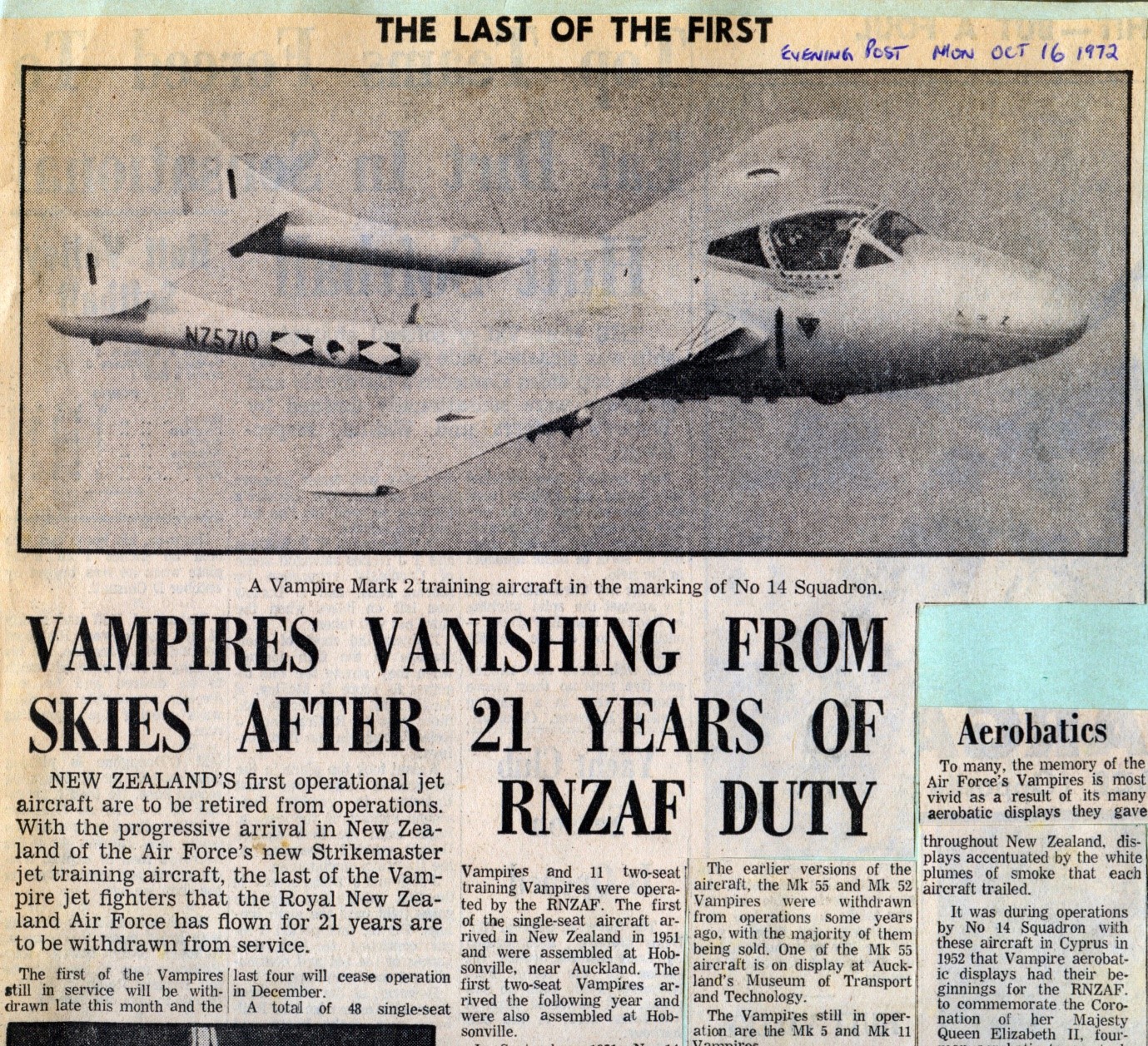
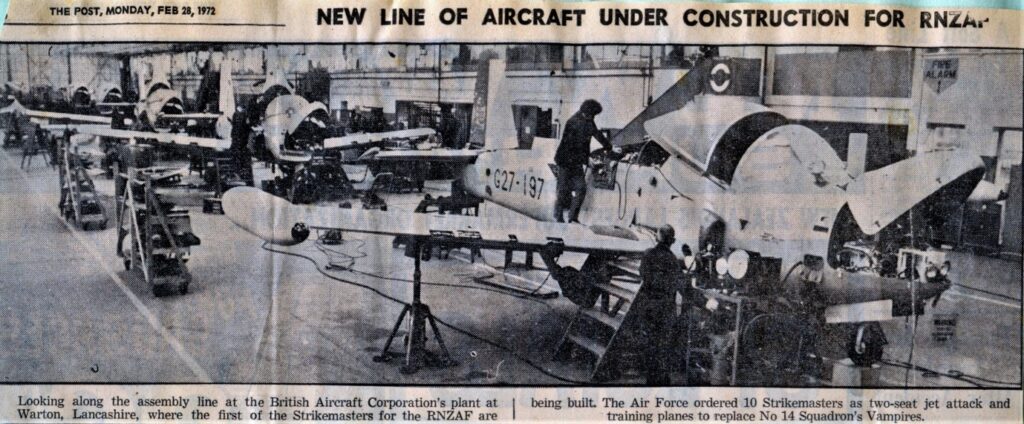
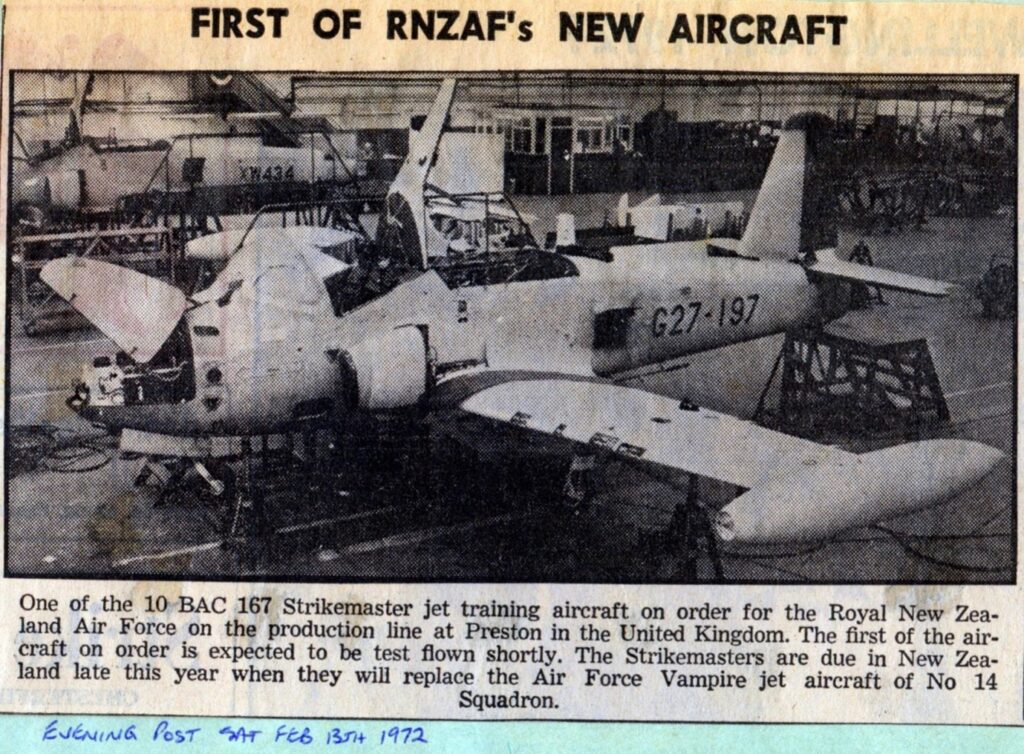
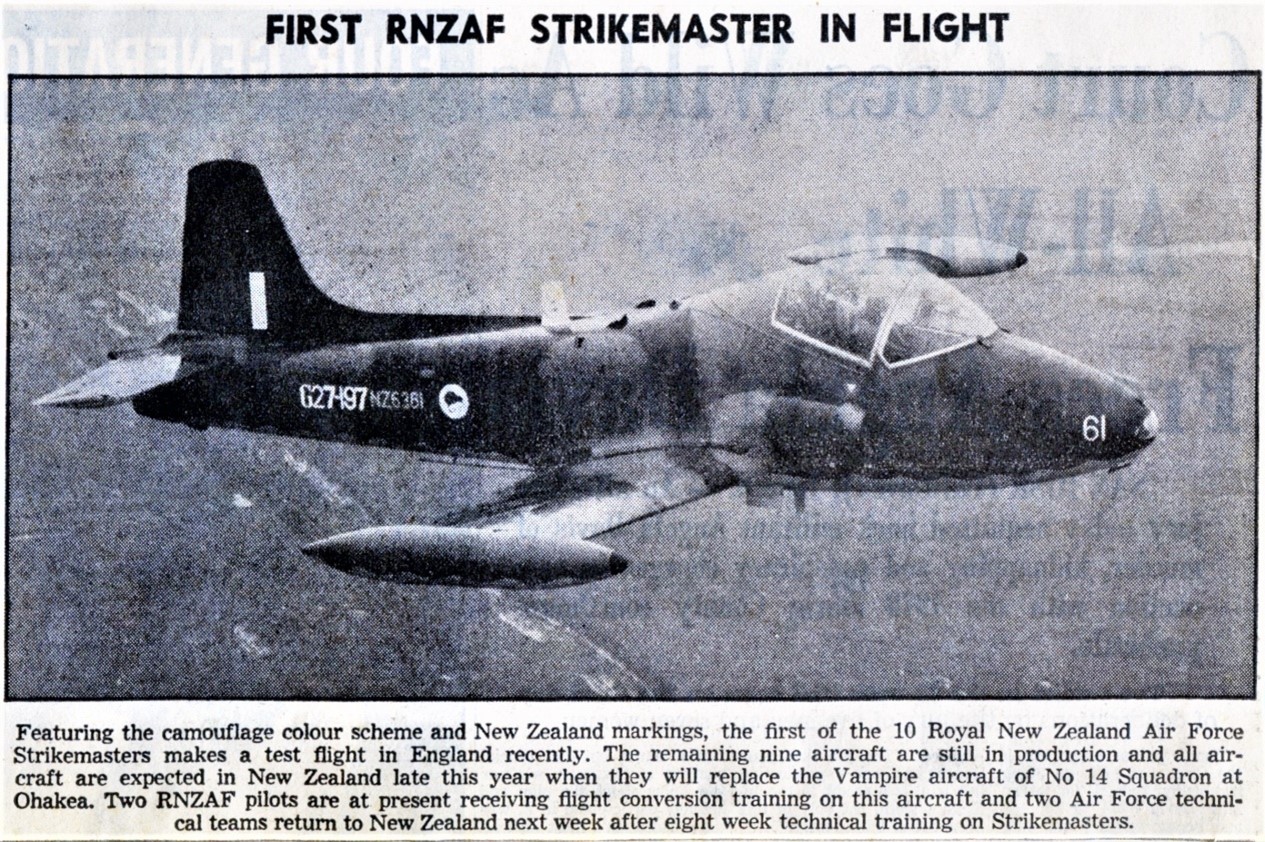
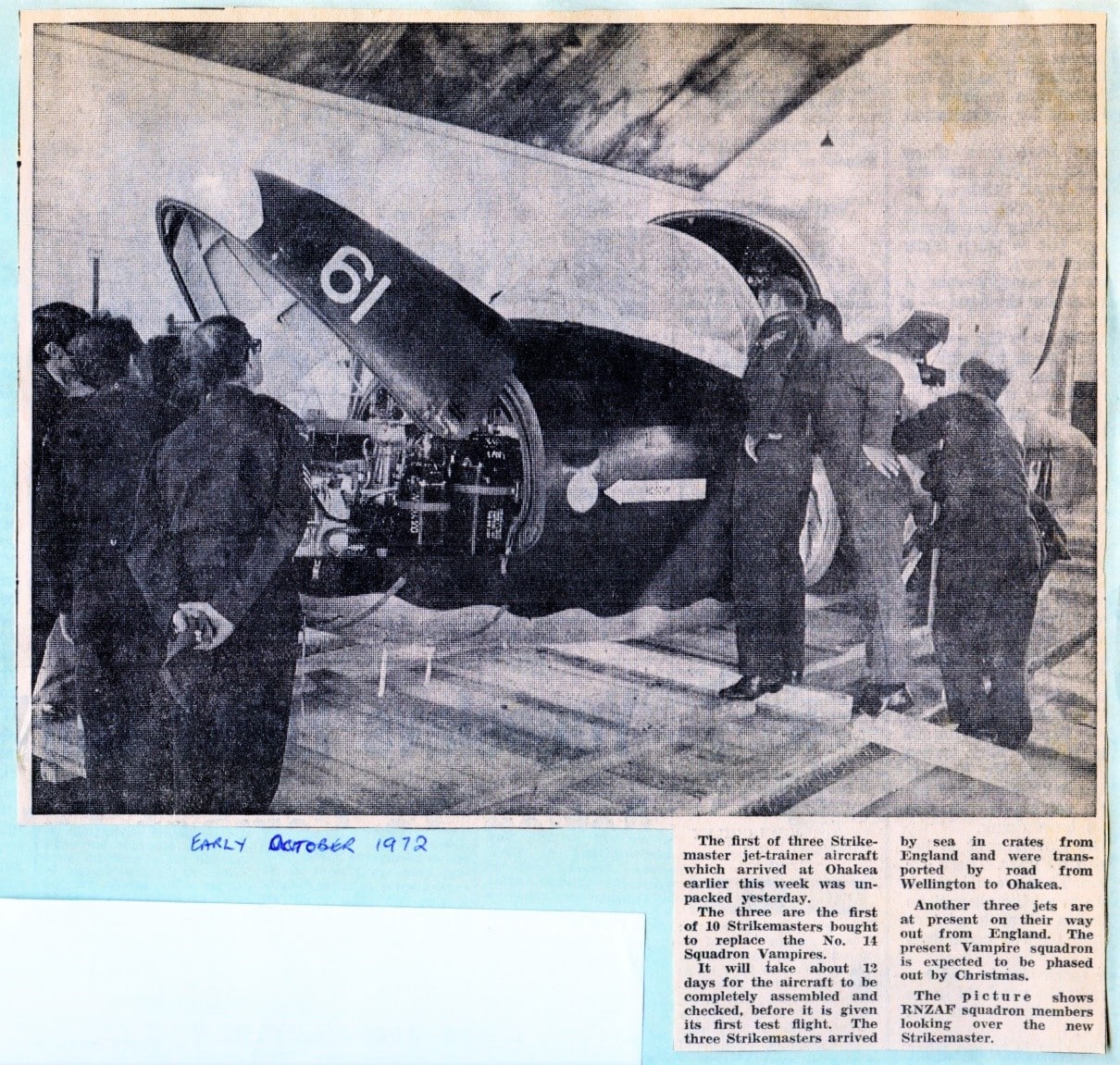
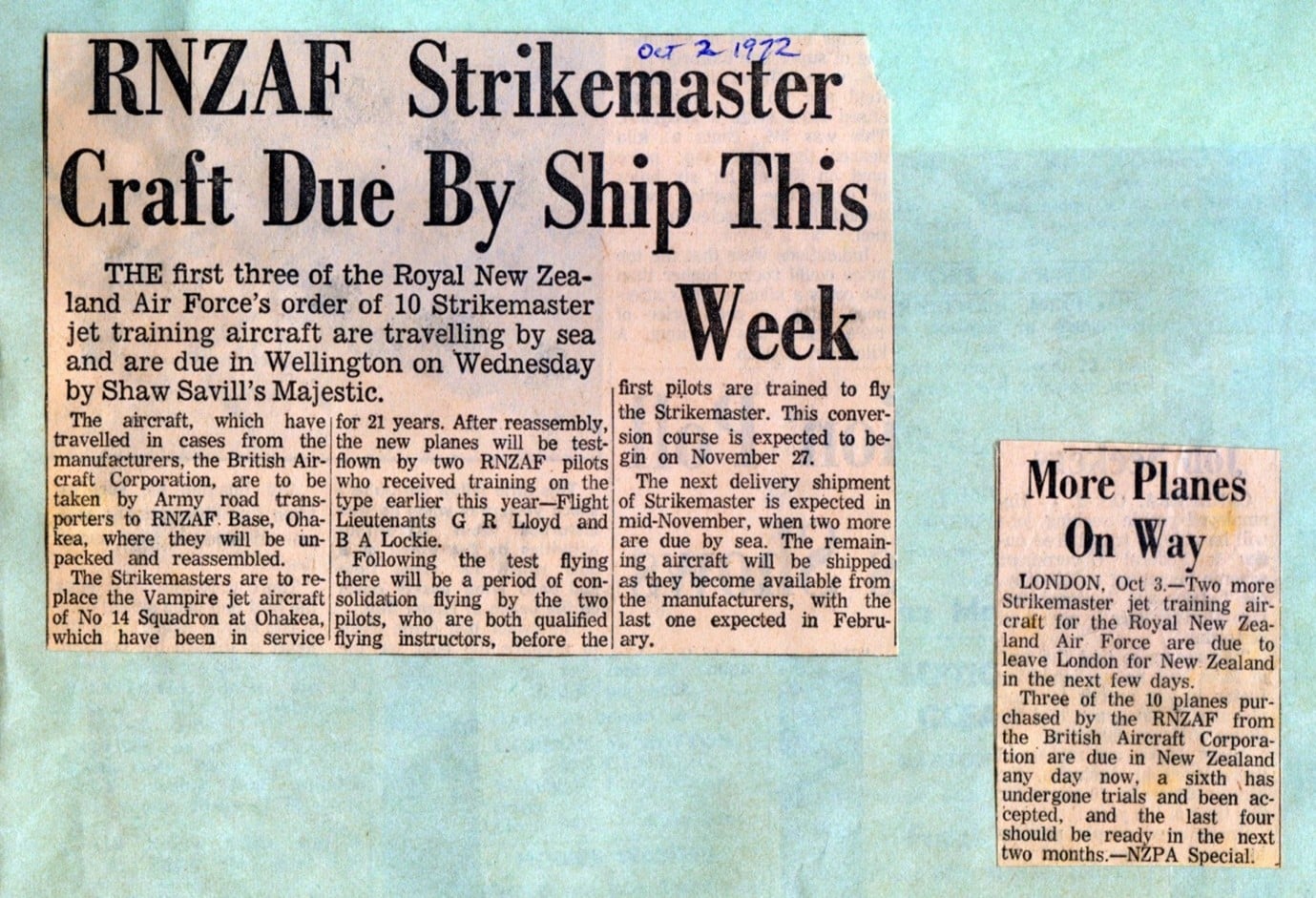
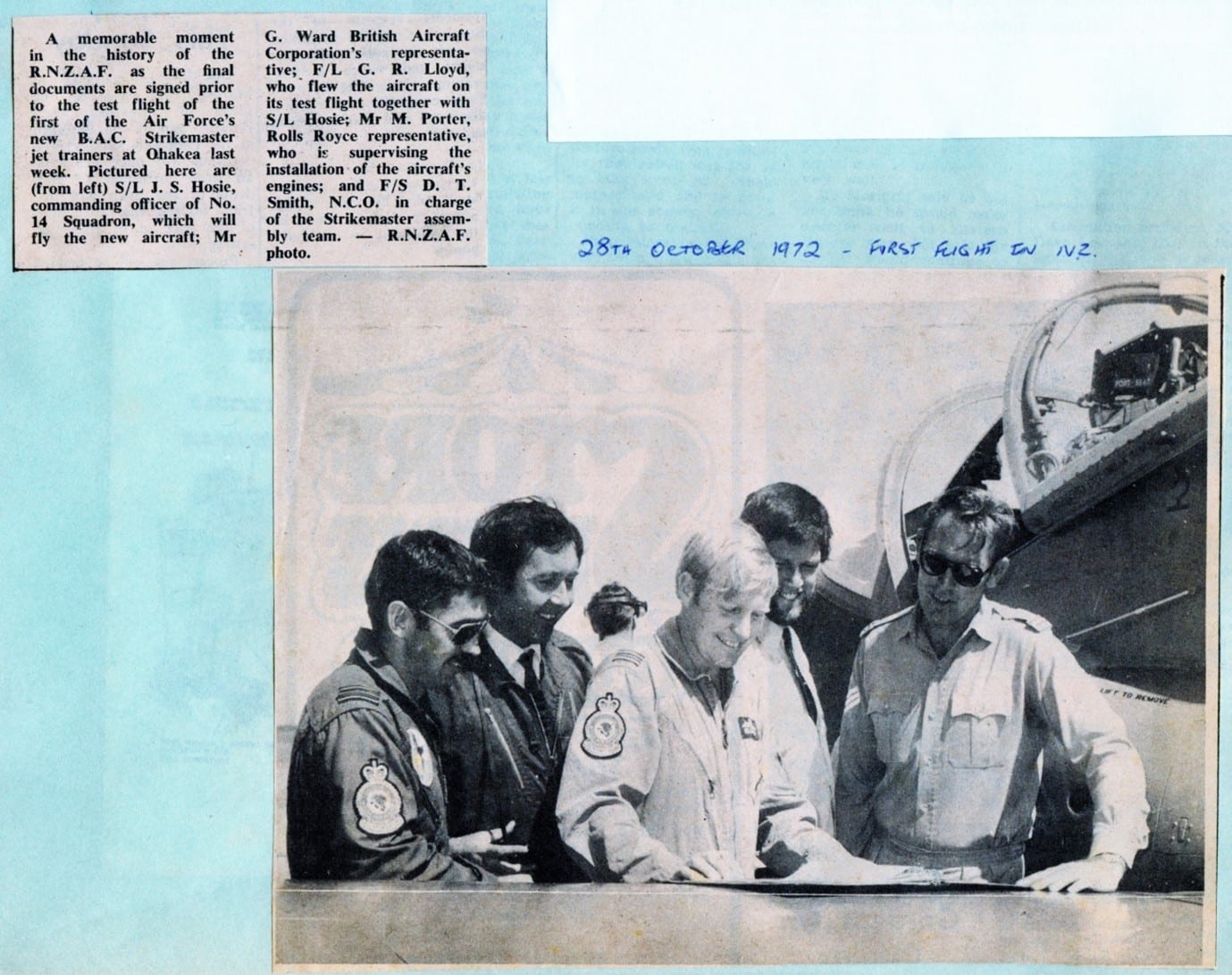
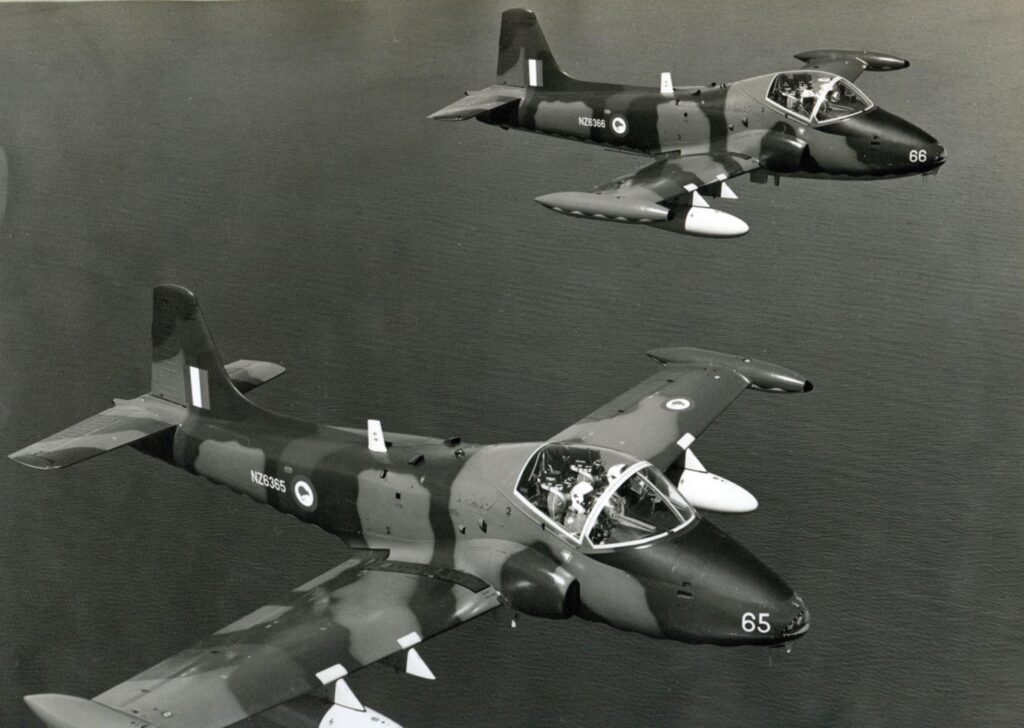
David Watkins
Posted at 01:40h, 26 NovemberFAO: Air Commodore Barclay
Dear Air Comm Barclay, Can I please say how much I enjoyed your article on flying the RNZAF Strikemaster? You may be interested to read that I am just about to complete the second edition of my history of the Jet Provost & Strikemaster and a paraphrased version of your piece would make an interesting addition to the relevant chapter? The first edition included contributions by John Hosie and Larry Olsen, and, with your permission, I would also like to ask you one or two questions the chapter. Thank you in advance and I look forward to hearing from you My regards David Watkins
Jim Barclay
Posted at 16:17h, 03 DecemberThanks David! Please feel free to use anything I have written in Part 1 of my Strikemaster story! And keep a lookout for Part 2 Feb-June 82, Part 3 Jul-Dec 82, and Part3 Jan-Jun 83. I’m just waiting for a couple of photos before they all come up on this site.
Barry Hudson
Posted at 08:55h, 30 NovemberGreat Article and very nice recollections on what was obviously a good solid aircraft to fly.
Jim Barclay
Posted at 16:25h, 03 DecemberThank you Barry! Parts 2, 3 and 4 are to come, shortly. Flying the ‘Blunty’ after nearly 3 years on the F4 Phantom was ‘quite a change’! That’s not a fair comparison, but, horses for courses, the Blunty was a solid jet trainer for those on the Advanced stage of their ‘Wings’ course, and for those junior pilots doing their Operational conversion, or Fighter Lead in Training (FLIT).
Barry Hudson
Posted at 08:55h, 30 NovemberGreat Article and very nice recollections on what was obviously a good solid aircraft to fly.